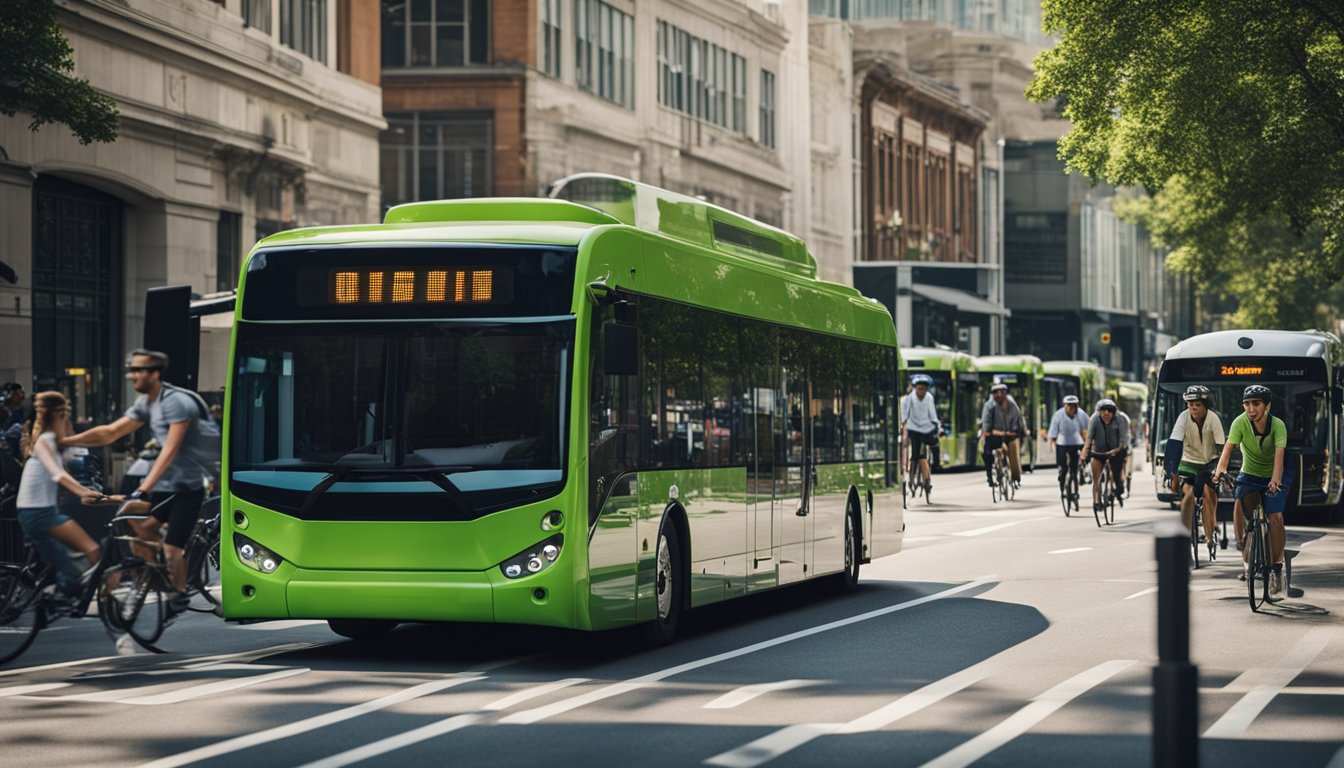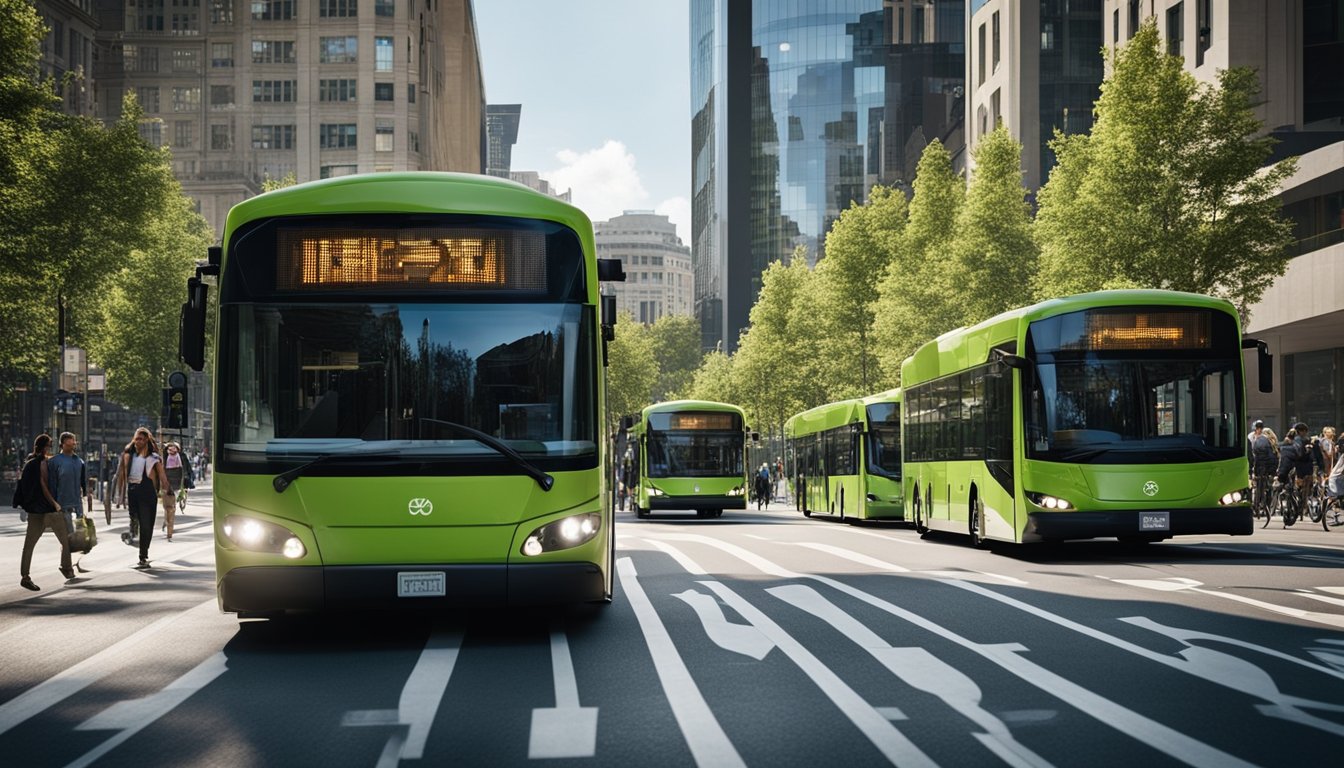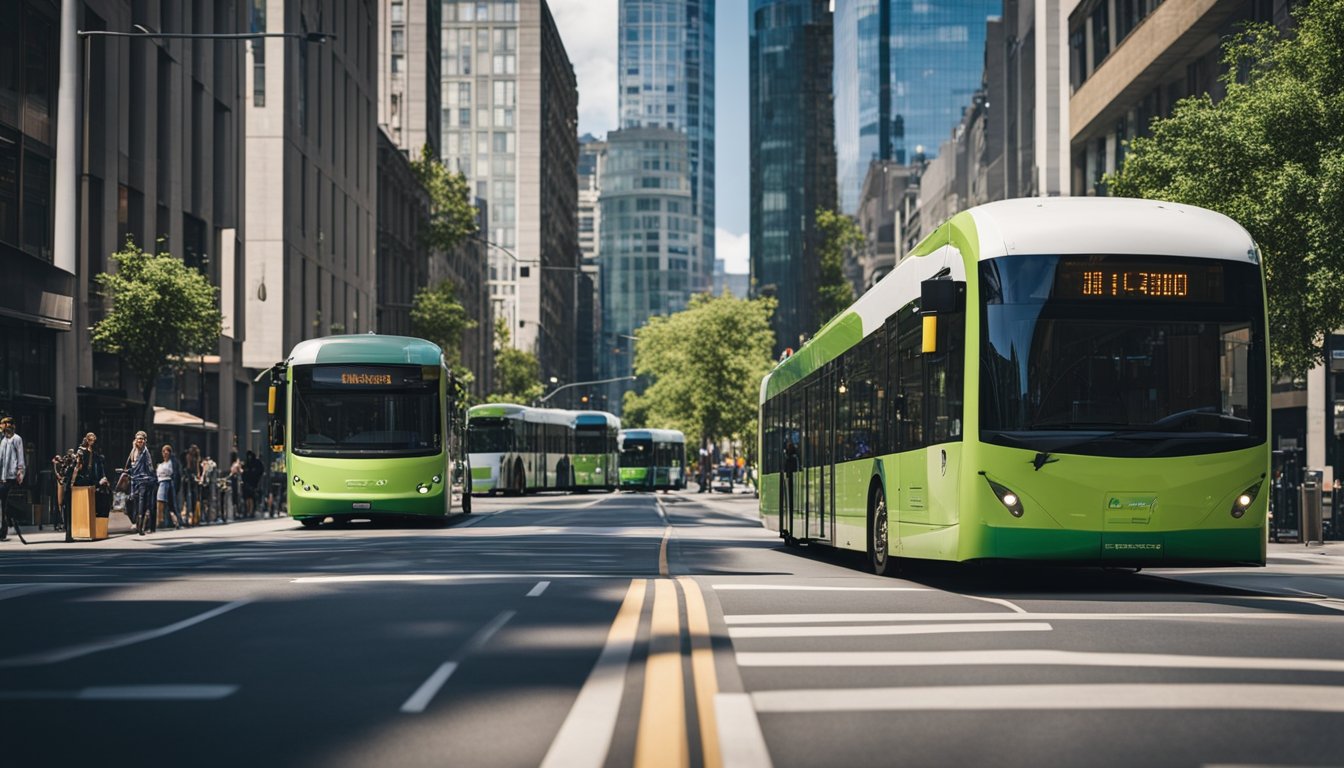Late updated: 07 May 2025 14:05
Written by: Eleanor Hartman
Sustainable Transport Solutions For Urban UK Areas: Innovations and Challenges
In the ever-evolving landscape of urban planning, sustainable transport solutions are becoming paramount for cities across the UK. The urgency to adopt green transport options cannot be overstated; these solutions promise not only to alleviate congestion but also to enhance the quality of life in urban areas. By integrating technologies such as electrified public transport and smart mobility systems, urban UK areas can significantly reduce their carbon footprint while improving accessibility for all residents.

The challenge lies in addressing urban mobility efficiently, considering the diverse needs of commuters while planning for future growth. Public opinion strongly supports sustainable transport initiatives, with increasing demand for options like electric buses and improved cycling infrastructure. We must explore innovative solutions and partner with both the public and private sectors to address these challenges, creating opportunities for a more environmentally friendly and connected urban future.
As we navigate this transition, our focus should be on creating robust transport policies that foster participation and support from all stakeholders. The potential for transformation is immense, and with deliberate action, we can lead the way in establishing sustainable transport systems that benefit everyone.
Key Takeaways
- Sustainable transport reduces urban carbon footprints.
- Public support is essential for green transport initiatives.
- Collaboration across sectors is vital for future mobility solutions.
Key Strategies for Sustainable Transport Solutions in Urban UK Areas

Implementing sustainable transport in urban UK areas involves expanding public transport networks, accelerating electric vehicle adoption, and encouraging cycling and walking. These strategies not only improve air quality but also enhance overall mobility for city dwellers.
Enhancing Public Transport Networks
An effective public transport network is vital for reducing reliance on personal vehicles. Expanding and refining bus and train services can significantly improve urban mobility.
We need to prioritise punctuality and reliability by investing in modern infrastructure and technology. Integrating services through smart scheduling and unified ticketing systems, like contactless payments or travel cards, can offer seamless journeys across different modes of transport.
Government support and incentives can further drive improvements, encouraging the development of more energy-efficient transport solutions that cater to the growing demands of urban populations.
Advancements in Electric Vehicles and Infrastructure
The rise of electric vehicles (EVs) is transforming urban transport landscapes. For EVs to thrive, robust infrastructure is imperative.
Expanding charging stations across cities, particularly in residential areas with limited private parking, can ease the transition. Incentivising EV adoption through grants and tax breaks is also crucial.
Our focus must shift towards bolstering energy-efficient grids and sustainable electricity sources. Furthermore, expanding car-sharing schemes that utilise electric vehicles could reduce overall urban car ownership, contributing to a cleaner environment.
Promoting Cycling and Walking
Cycling and walking are cornerstone strategies for urban sustainability. Cities are rolling out dedicated bike lanes and pedestrian zones, reshaping the commuting experience.
Investing in secure bike storage facilities can remove barriers to cycling. Education campaigns encouraging active travel can also shift cultural perceptions.
By designing cities with cyclists and pedestrians in mind, we create more liveable spaces. Improved air quality and reduced traffic congestion are among the notable benefits. As a community, supporting these initiatives and urging policy changes can pave the way for a more sustainable future.
Addressing Urban Mobility Challenges and Future Opportunities
In the UK, sustainable urban mobility involves overcoming several challenges while offering opportunities for improved quality of life and reduced environmental impact. Key areas include integrating comprehensive mobility services, addressing congestion and pollution, and using urban planning to support sustainable development.
Integrating Mobility as a Service (MaaS)
Integrating Mobility as a Service (MaaS) is essential for enhancing connectivity and reducing car ownership. MaaS platforms combine multiple transport modes such as public transit, bikes, and ride-sharing into a single service accessible through one payment system. This approach simplifies journeys, offering personalised travel options.
In cities like London, MaaS can mitigate transport issues by providing real-time information and flexible route planning. These platforms support decarbonisation by encouraging public transport usage over private vehicle travel. Importantly, enhancing urban mobility services can lead to an improvement in the public's health and wellbeing, reducing reliance on cars while promoting active transport methods.
Reducing Congestion and Air Pollution
Congestion and air pollution significantly affect urban populations and quality of life. Our transport systems need a shift to reduce these impacts. London is taking leadership by implementing low emission zones and expanding cycling lanes, which lower carbon emissions. Electric buses also revolutionise urban transport, curbing air pollutants.
For us, reducing congestion will also involve encouraging public transport use and supporting alternative transportation modes. Our cities must balance the demands of growing urbanisation and population growth while tackling the climate crisis. Adopting cleaner technologies and efficient transport management are crucial steps in this direction.
Urban Planning for Sustainable Development
Effective urban planning is fundamental for creating sustainable cities tailored to future challenges. We must integrate sustainable transport solutions in development plans, placing transport hubs close to residential and commercial areas to minimise travel distances. This approach not only decreases dependency on cars but also enhances community connectivity.
Prioritising mixed-use developments aligns with reducing emissions and enhancing quality of life. Authorities can create greener urban landscapes, including pedestrian-friendly areas and bike paths. Through thoughtful planning, our cities can unlock new opportunities for sustainable growth and reduced environmental impact, paving the way for cleaner, healthier communities.
Frequently Asked Questions

In addressing sustainable transport in urban UK areas, several strategies are pivotal. Public transportation improvements focus on carbon emission reduction, while cycling and walking are encouraged through infrastructure enhancements. Car sharing and electric vehicles are increasingly integrated to combat congestion. Smart technology, alongside progressive policies, guides the evolution of urban mobility.
How are UK cities improving public transportation to reduce carbon emissions?
UK cities are adapting their public transport systems to be more eco-friendly. This includes the introduction of hybrid buses that reduce fuel consumption and emissions. Additionally, cities are increasing the number of electric buses and promoting the use of trains powered by sustainable energy sources.
What are the most effective strategies for promoting cycling and walking in UK urban areas?
To promote cycling and walking, cities are expanding dedicated cycling lanes and pedestrian pathways. Infrastructure improvements such as bike-sharing schemes and secure parking facilities are also being implemented. Public campaigns encourage people to consider these modes for their health benefits and their positive environmental impact.
In what ways is car sharing being implemented to alleviate urban congestion in the UK?
Car sharing is leveraged through platforms that connect drivers with individuals seeking rides. This reduces the number of cars on the roads. Local councils often support these initiatives through dedicated car sharing parking spaces, facilitating easier access and convenience for users.
What role do electric vehicles play in UK urban transportation planning?
Electric vehicles (EVs) are integral to reducing urban pollution. Investment in EV charging infrastructure across key locations ensures accessibility and convenience for EV owners. Urban transport policies are increasingly inclusive of incentives for EV usage, promoting a shift away from traditional petrol and diesel vehicles.
How is the UK integrating smart technology to enhance sustainable urban mobility?
Smart technology is vital in tracking transport patterns and optimising traffic flow. Cities utilise data analytics, mobile apps, and smart public transport systems to improve efficiency and sustainability. This includes real-time tracking of public transport and the use of smart traffic lights to reduce congestion.
What policies are shaping the future of sustainable transport in UK metropolitan regions?
National and local policies focus on reducing carbon footprints and promoting cleaner transport methods. For instance, congestion charges in cities like London incentivise using public transport. Regulatory support for low-emission zones and subsidies for green vehicles are also shaping the sustainable urban transport landscape.